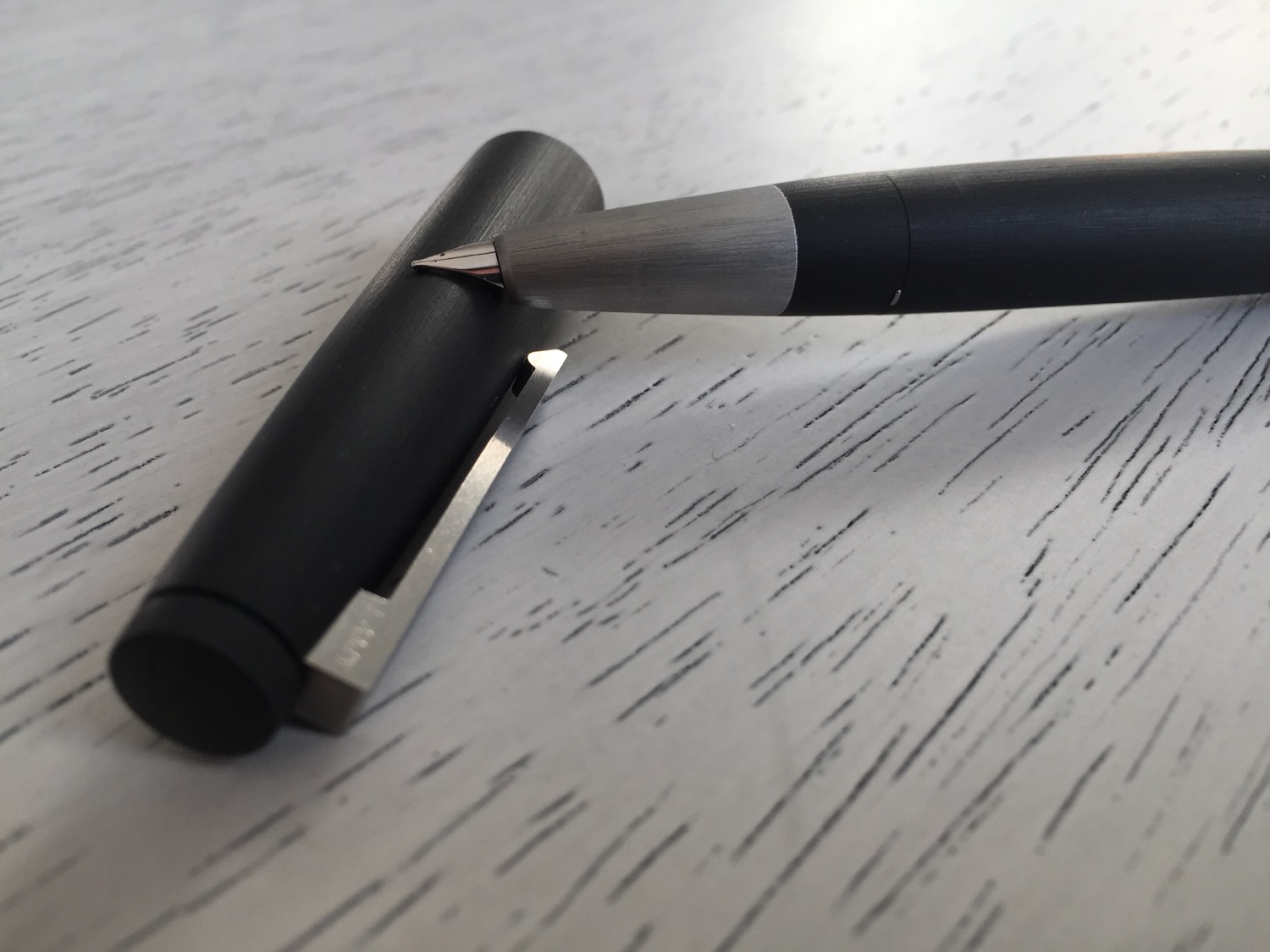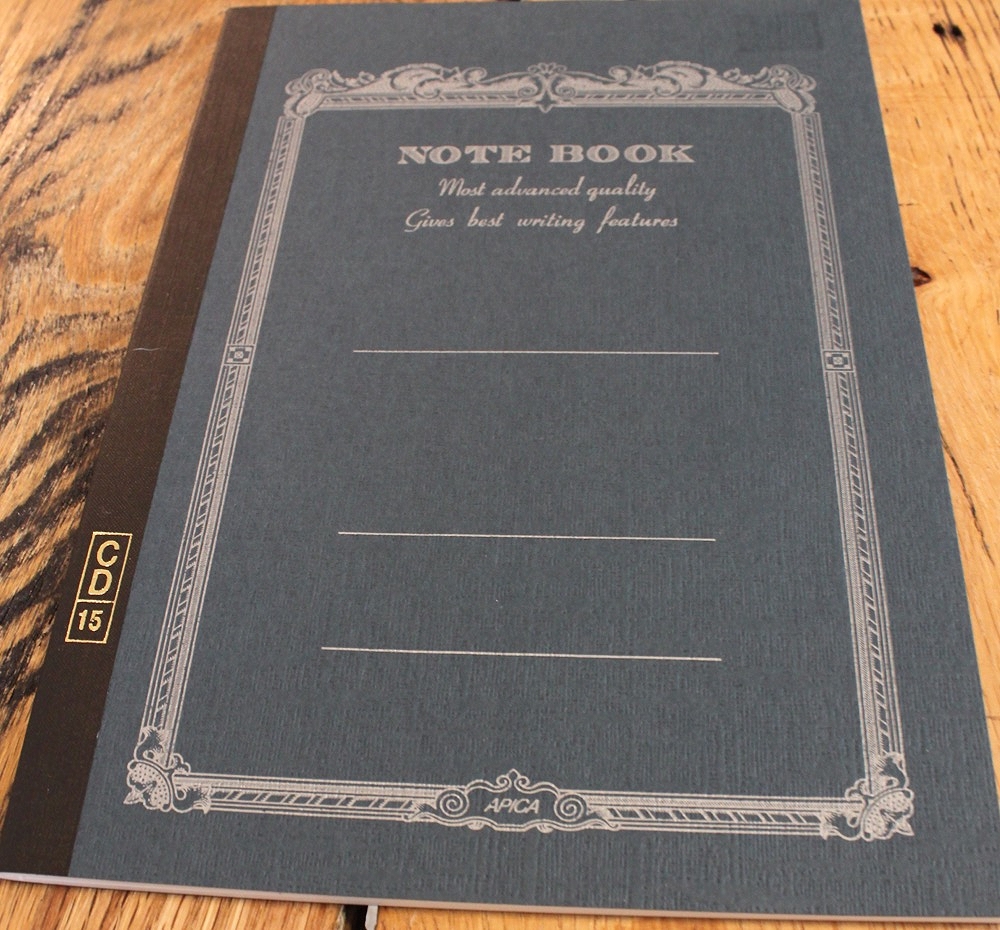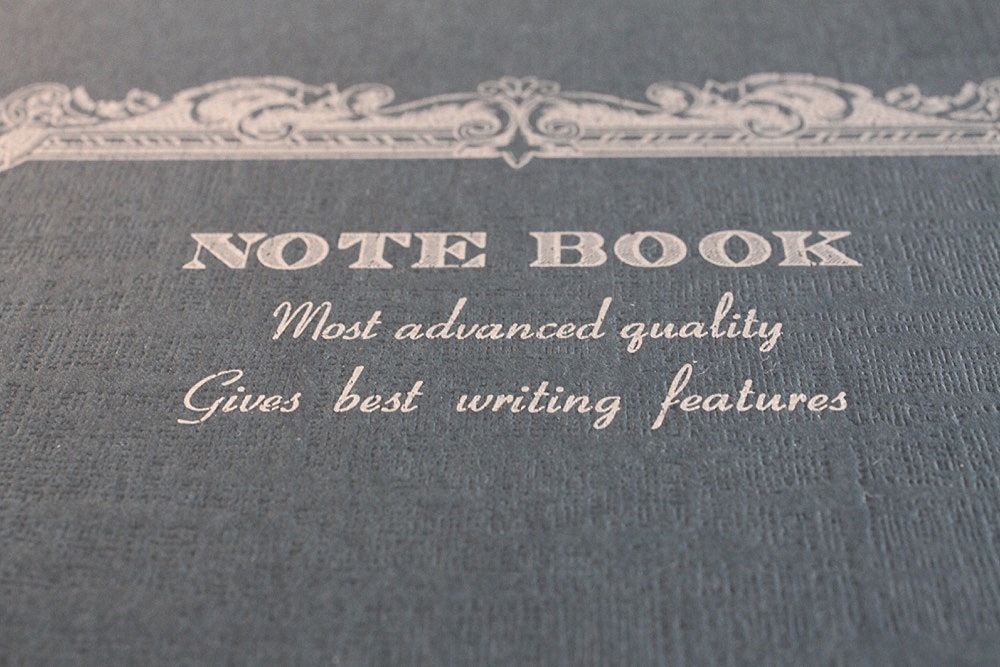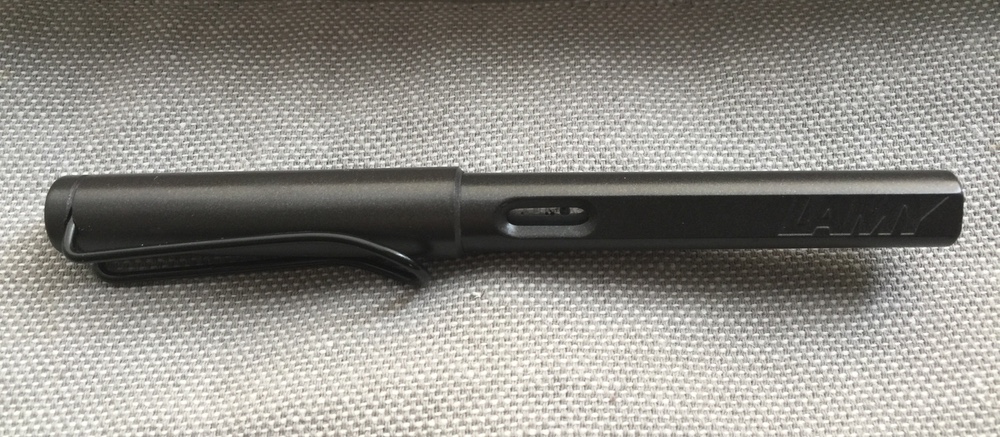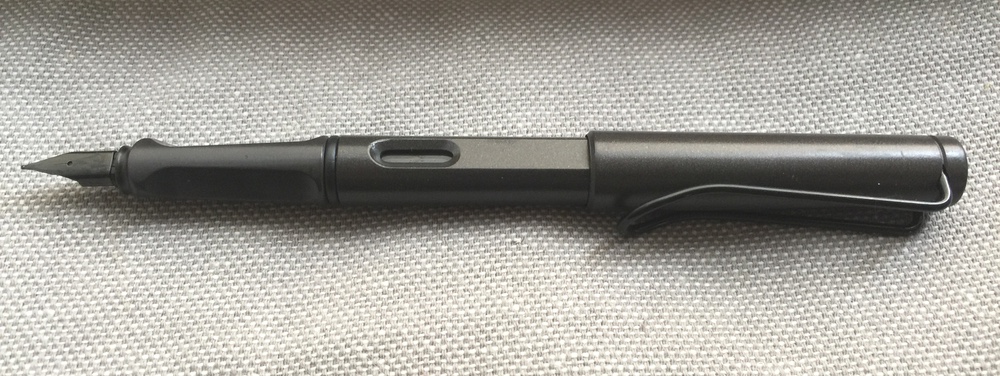Fifty years ago, Gerd A. Müller's creation was released to the world. This carefully-crafted fountain pen saw several small quality tweaks over the decades, but the pen of today is almost identical to the pen that debuted in 1966. How do I start a review of one of the most iconic fountain pens ever made? If you've found this review in your quest to learn more about the Lamy 2000, you already know that it's an excellent pen. Pen aficionados have reviewed this pen extensively, so what could I possibly have to add? All that I can offer is the perspective of someone who purchased the Lamy 2000 as his first gold-nib fountain pen. This isn't a pen that I purchased to sit on a shelf after a few weeks. This is a pen that I purchased to use daily, carry to meetings, ride around in my bag, and serve as my or maybe the pen. If you're in search of the same thing, I hope that this review can be of some help.
The Lamy 2000 photographs terribly, which is a complete disservice to the pen's beautiful finish. The pen's makrolon body and stainless steel grip both have a brushed finish, and the body tends to have a shininess in photos. In person, the makrolon body has more of a matte finish, and it's much more attractive. The grip of the Lamy 2000 is something special, and it's hard to describe the distortion effect that the brushed finish has on the stainless steel surface. The pen's grip actually appears to glow under certain types of light.
There are three barely-visible seams on the Lamy 2000's body. There's a tiny seam at the end of the pen, where the piston knob meets the pen body, and there's another seam where the pen cap can be twisted off for cleaning. This seam also holds a small o-ring in place, and the teeth of the o-ring serve to grip the cap when the pen is capped. The final seam is a pseudo seam between the stainless steel grip and makrolon, which can't be twisted apart.
The makrolon body of the Lamy 2000 is almost soft to the touch, which is hard to believe without handling it. The brushed texture is velvety and serves to grip to the fingers as the pen is used. The body of the pen has a slight bulge in the middle and tapers evenly on each end, somewhat reminiscent of a blimp.
The Lamy 2000 uses a piston filling mechanism, which is a departure from the cartridge and converter pens that make up the lower end of the Lamy product line. The pen is very easy to fill. Twist the piston knob out, submerge the nib into your favorite bottle of ink, past the air hole on the grip, and twist the piston knob back into place. Piston fillers hold much more ink than their cartridge counterparts, and the Lamy 2000 is no different. I use the 2000 as my daily writer, so ink capacity is important. The best part of the pen's piston system is that it practically disappears when not in use. The seam between the piston knob and pen body is barely visible, when tightened.
Notice the air hole? This is where the pen draws in ink. Also, this photo does a pretty nice job of showing how the metal grip seems to glow in certain types of light.
One of the worst parts of using fountain pens is running out of ink on the go. It's not exactly easy nor smart to carry around a bottle of ink in an everyday carry bag. The Lamy 2000 has a subtle ink window that notifies the user of low ink levels with plenty of time to spare. At first, the ink window seems pretty useless, and most may even fail to notice it at first glance. Once the ink levels are low enough something magic happens, and the ink window becomes see-through. This is another great example of how the best features of the Lamy 2000 disappear until they are needed. There is a generous amount of ink mileage between an empty ink window and a dry nib, so there is plenty of time for a refill.
I typically rely on a bulb syringe for cleaning cartridge fountain pens, so the design of the Lamy 2000 causes some challenges. I watched a few YouTube videos that show how others clean their Lamy 2000s, but I'm just not willing to twist this pen apart. It's best not to overcomplicate the process by disassembling the pen, since one wrong move may result in permanent damage. Simply flush the pen by pulling clean water into the ink chamber and pushing it out five to ten times. Sit the pen nib down in a glass full of fluffy paper towels, and allow it to dry overnight. Goulet Pens also published an easy way to grease the piston, if it becomes stiff over time.
The Lamy 2000 can be posted, but I think that unposted is the only way to go. While the cap is snug when posted, it rests primarily on the piston knob, which can cause the knob to rotate as the cap moves in the web of the hand. There have been a few occasions where this has caused some ink leakage, so I avoid posting altogether. If posting is vital, pressing the cap down very tightly causes it to grip to the pen body as well, reducing the chances of an inky disaster. Considering that the designers seem to have perfected every inch of this pen, I'm surprised that something so basic as a proper post has been overlooked entirely.
There are several tiny protruding teeth, slightly above the grip section of the Lamy 2000 which help the cap to snap into place. I barely notice these teeth, even thought they are located exactly where I grip the pen. The pen caps with a satisfying click, although the cap takes an odd amount of force to cap down onto the pen. It feels as if the metal grip is grinding against the inside of the cap. Realistically this isn't causing any damage, but it's not a pleasant feeling. Fortunately, this becomes better with usage. The capping and posting experience is easily the worst part of using the Lamy 2000.
Despite my lack of enthusiasm for the pen's cap and post performance, the Lamy 2000's clip is excellent. The clip is spring-loaded, making it easy to clip the pen securely on items of various thicknesses. This clip itself is wider at the top of the cap and thinner towards the base, which gives the cap a sleek and timeless look. The clip is a solid piece of metal and is thicker and more robust than any of the clips on my other pens.
The Lamy 2000 is a popular choice for those seeking to break the gold-nib barrier, and I have to admit that it's my only gold-nib pen. It's important to point this out, because my approach to this review is as someone who has never experienced a gold nib before.
The gold nib on the Lamy 2000 is understated, with no fancy engravings or flourishes. The nib is semi-hooded, which means that part of the nib is recessed into the pen's body. This helps to keep the nib moist when the pen is uncapped, but it also brings the nib in line with the pen's sleek design. Where most nibs protrude prominently from a pen's body, the Lamy 2000's nib becomes a part of the design, as if to say "I'm meant to be here." It extends the tapered shape of the body and is platinum coated, so it blends into the stainless steel grip.
Ok, so it looks good. You've rambled for 1000 words already, but I just want to know how it writes!
The Lamy 2000's nib is the smoothest nib that I own. The nib floats across paper with ease, and it's possible to write with very minimal pressure. Like most gold nibs, the 2000's nib flexes with pressure, resulting in a nice degree of line variation. Even though there is some flex, the nib is firm enough to use as an everyday writer.
I agonized for days over whether to choose an extra fine, fine, or medium nib. I ultimately picked the fine nib and have zero regrets. I usually write with fine-nibbed pens, and the Lamy 2000's fine is very similar to that of the Lamy Safari. The Lamy 2000 does lay down a much juicier line than the Safari, which can be a negative for those looking for fast dry times. I find that the juicy line brings out the color properties of the ink, which is apparent when comparing the Safari's nib with the 2000's.
Notice the difference between the Lamy Safari (Top) and Lamy 2000 (Bottom)? Both are using the same Aurora Blue ink, but the Lamy 2000 leaves a much juicier more vivid line.
The Lamy 2000 is rumored to have poor nib quality control. Although the 2000 is available on Amazon for 125$ or so, I chose to pay a little more and bought the pen on Pen Chalet. Pen Chalet has excellent customer service, and I wanted to make sure that it would be as painless as possible to return a faulty pen. I've had zero issues with my pen, and it has written perfectly since my very first use. It appears that the quality control issues are more fiction than fact, but I don't regret paying a bit more for the peace of mind.
Although the Lamy 2000 is a superb writer, its nib does have a sweet spot that could be confused for a quality control miss. Rotate the pen slightly, and the ink flow comes to a halt. It's very easy to avoid this issue when using a standard grip. Since most fountain pen nibs protrude, it's easy to tell when the nib is positioned correctly on paper. I don't think that the Lamy 2000's nib is any more or less responsive than other nibs; it's minimal design just makes it harder to tell when it's positioned properly.
The Lamy 2000 is a truly remarkable pen. Its fifty-year-old design still looks modern and edgy, and I'm sure that it will look just as edgy in fifty more years. The pen's features, from the ink window to the piston knob, only appear when needed and then vanish into the pen's brushed body. The Lamy 2000's gold nib, perfect weight, and brushed body combine to form the best writing experience that I've ever had. If you've stumbled upon this review because you're on the fence about this pen, go ahead and buy it. I spent several months reading reviews and none of them seem to do the pen justice, now that I have it in my hand. Aside from the functionality of the Lamy 2000, its history is something special. While I love my TSWBI, Kaweco, and Pilots, this will be the pen that I pass down to my children. In a world of throwaway things, this is a pen that is truly built to last.
Typically I would end the review here, but I wanted to point out a few resources that were very helpful to me when researching the Lamy 2000.
- Fountain Pen Network's Review of the Lamy 2000 - This is really the only review that you need to read.
- The Stuff and Things Review of the Lamy 2000 - This guy mostly reviews pipe tobacco, but his fountain pen and stationary reviews are excellent.
- Ed Jelley's Review of the Lamy 2000 - Ed Jelley posts the most beautiful pen reviews on the net.
- The Pen Addict Review of the Lamy 2000 - Brad's pen blog introduced me to the world of fountain pens, and his review also includes a list of useful resources.
- The Modern Stationer Review of the Lamy 2000 - Check out the picture under "Final Thoughts." This is the grip glow that I am referring to.

